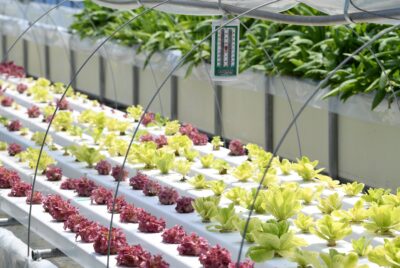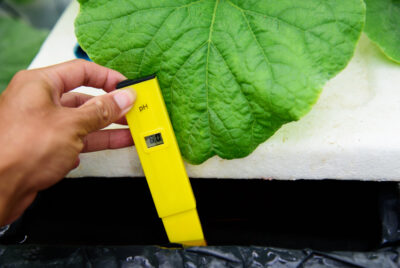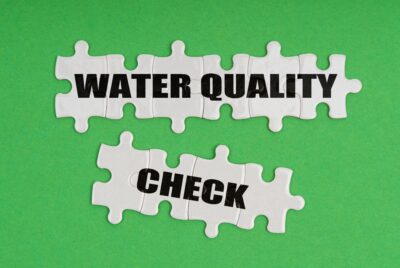Hydroponic Greenhouse
We may earn a commision from purchases made using our links. Please see our disclosure to learn more.
Hydroponic Greenhouse: A Path to Sustainable Year-Round Gardening.
Hello, fellow gardening enthusiasts! I’m excited to delve into one of my favorite subjects today: the hydroponic greenhouse.
Have you ever dreamed of a gardening approach that ensures optimal growth conditions year-round, without worrying about the whims of Mother Nature? If so, then welcome with open arms to the exciting world of indoor agriculture.
The Fundamentals of Hydroponic Gardening
What is Hydroponics?
Hydroponics, at its most basic, involves growing plants in a water-based, hydroponic fertilizer solution rather than traditional soil. You might be thinking, “Wait, can plants even survive like that?” Well, let me tell you, I was equally surprised, but the answer is a resounding and unequivocal yes!
The Principle of Hydroponic Gardening
In hydroponics, plants’ roots directly access the nutrients they need through the hydroponic fertilizer solution, which is dissolved in the water. This revolutionary approach ensures that the plant doesn’t waste any energy searching for its food, resulting in faster growth, higher yields, and a marvelously efficient system. Mind-blowing, isn’t it?
Types of Hydroponic Systems
Indoor Hydroponic Systems come in a variety of forms, each with its unique characteristics and advantages. Among the commonly used ones are the wick system, deep water culture, nutrient film technique, aeroponic system, and ebb and flow system. The choice of system depends on factors such as plant type, available space, and budgetary considerations.
The Role of the Hydroponic Greenhouse
Creating Optimal Growing Conditions
This green oasis serves as an idyllic sanctuary for your plants, providing them with the perfect environment for growth and development, irrespective of the capriciousness of outdoor weather conditions.
Benefits of soilless greenhouses
Greenhouses offer an array of remarkable benefits. Not only do they enable year-round gardening, but they also ensure higher yields, necessitate less water usage, save precious space, and eliminate the risks associated with soil-borne diseases. Additionally, who wouldn’t cherish the idea of having their own personal oasis—a verdant, soothing space right in the comfort of their own home?
Building Your Green Oasis
Choosing an Ideal Location
Carefully select a location that receives ample sunlight, offers easy access to water and power sources, and provides sufficient space for accommodating both the greenhouse structure and your desired plant capacity. Remember to take into account factors such as local climate conditions, sun exposure, and room for future expansion.
Selecting the Right Materials For Your Hydroponic Growing Facility
The selection of high-quality materials plays a pivotal role in constructing a durable greenhouse. Opt for materials that exhibit resistance to moisture while also providing adequate insulation. Highly recommended materials for sturdy frameworks include galvanized steel or aluminum, while optimal light transmission, a vital factor for your plants’ growth, can be ensured by choosing glazing options such as polycarbonate or glass.
Setting up an Indoor Hydroponic System In Your Glasshouse
When it comes to setting up your hydroponic system, you have a myriad of options at your disposal. Carefully consider variables such as the specific plant varieties you wish to grow, the available space, and your level of expertise in hydroponics. Some popular choices include the nutrient film technique (NFT), deep water culture (DWC), or hydroponic drip systems. It’s always wise to conduct thorough research and seek advice from experts to determine the best fit for your individual needs and goals. I personally prefer a large hydroponic flood table(ebb&flow)
Maintaining Your Hydroponic Vegetable Farm
Hydroponic Fertilizer Management
In hydroponics, the hydroponic fertilizer solution becomes the lifeline for your plants. It’s imperative to regularly monitor and adjust the hydroponic fertilizer levels to ensure optimal plant growth. Regularly test water and hydroponic fertilizer solutions to maintain the correct balance and prevent deficiencies or toxicities.
Climate Control
Maintaining a stable and controlled climate within your greenhouse is vital to achieving success. Install effective ventilation systems, such as fans and vents, to regulate temperature and humidity levels. Consider using shading materials or implementing automated systems to manage light exposure and prevent overheating during the scorching summer months. Maybe a Co2 generator to take your plants to the next level.
Pest and Disease Control
Although indoor hydroponic systems minimize the risk of soil-borne pests and diseases, it’s crucial to remain vigilant and proactive. Implement rigorous preventive measures such as proper sanitation practices, regular inspections, and integrated pest management techniques. Monitor your plants closely and promptly address any signs of pests or diseases for their well-being.
The Future of Soilless Greenhouses
The future shines brightly for soilless greenhouses. With continuous advancements in technology and sustainable farming practices, we can anticipate even more efficient systems, improved automation, heightened integration with renewable energy sources, and increased emphasis on research and development. A significant stride forward in this evolution is the incorporation of IoT (Internet of Things) devices into hydroponic systems. These smart devices enable real-time monitoring and control of various factors crucial to plant growth, such as nutrient levels, pH balance, temperature, and humidity. They streamline the management process by providing instantaneous data and even automated adjustments, ensuring optimal growing conditions at all times. This not only reduces labor and resource wastage but also enhances crop yields and quality. Furthermore, with the power of IoT, growers can monitor and manage their greenhouses remotely, bringing unparalleled flexibility to the realm of hydroponics. The potential impact of soilless greenhouses, augmented with IoT capabilities, on food production and the advancement of a more sustainable future is truly awe-inspiring.
Conclusion
In conclusion, hydroponic greenhouses present an exciting and sustainable avenue for growing plants indoors. They provide optimal growing conditions, ensure year-round availability of fresh produce, contribute to higher yields, and offer numerous environmental advantages. By gaining a deep understanding of the fundamentals, constructing a suitable structure, and implementing diligent maintenance practices, you embark on a gratifying journey of indoor hydroponic gardening.
FAQ’s
Is hydroponic gardening suitable for beginners?
Absolutely! Beginners and experienced gardeners alike can immensely enjoy hydroponic gardening. Start small and gradually expand your knowledge, skills, and confidence as you explore the captivating world of hydroponics.
How much water does indoor hydroponic gardening require?
Indoor hydroponic systems boast significantly enhanced water efficiency when compared to traditional gardening methods. Water usage varies depending on the specific hydroponic system and plant types chosen, but the overall efficiency is notably higher.
Can I grow any plant using hydroponics?
You can successfully cultivate the vast majority of plants using hydroponic techniques. From herbs and leafy greens to tomatoes, cucumbers, strawberries, and even flowers, hydroponics offers a versatile approach. However, specific plant species may have unique requirements, requiring thorough research and adherence to best practices for successful cultivation.
Do indoor hydroponic systems require constant monitoring?
While hydroponic systems require monitoring, advanced technologies have made automating tasks more convenient. Furthermore, advanced technologies enable hydroponic gardeners to streamline monitoring processes and ensure efficient system operation.
Are hydroponic greenhouses environmentally friendly?
People regard greenhouses as highly environmentally friendly. Their efficient water usage surpasses that of traditional soil-based gardening practices, effectively conserving this precious resource. Moreover, hydroponic systems eliminate the need for harmful pesticides and herbicides, contributing to a healthier ecosystem. Additionally, establishing greenhouses closer to urban centers can significantly reduce the carbon footprint associated with food transportation.
As you embark on your hydroponic greenhouse journey, stay curious, embrace learning, and fearlessly experiment. Happy gardening!





Comments are closed.